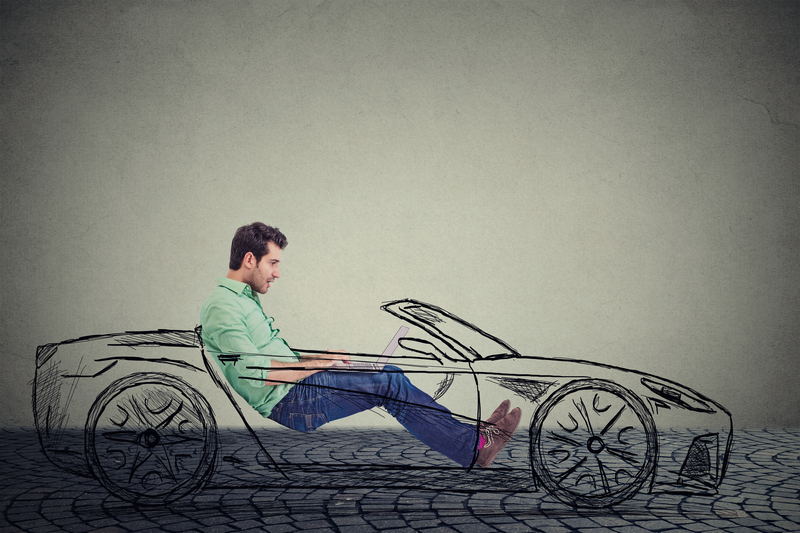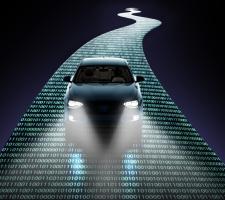
The transition to autonomous vehicles (AVs) means that many of the factors which have shaped automotive design for the past 130 years no longer apply. At present, the design of a car is largely determined by the anticipated direction of travel: the car’s silhouette immediately shows where the front and back are. Driverless vehicles will open up entirely new liberties in terms of a car’s exterior and interior. These days, designers working for manufacturers, suppliers and technology companies are dealing with the question of how autonomous cars should be designed. What can these cars look like? Which features and functions do they need to have? How would people like to communicate with these vehicles? What do passengers in these cars want to do? Which materials can be used? Although a great deal has yet to be decided and there are only vague ideas at best, one thing appears to be certain: autonomous driving means there will only be passengers, not a driver. This fact alone opens up entirely new options in terms of designing the interior. The centre console and the dashboard will thus no longer be needed, and the instruments will no longer have to be oriented towards the driver. At the same time, the exterior can be completely redesigned, especially since the vehicles intended for the final stage of a journey will no longer need to have a front and rear.
To date, the interior of a car has been poorly suited for communication among passengers, since everyone sits facing the same direction. But with the cars of the future, the seats can be completely reconfigured to create an atmosphere ideal for communicating. Until now, people were forced to stay seated with their seatbelts fastened, and this will not be necessary in autonomous cars either. The dramatic reduction in accident rates will have an impact on legislation about safety standards. Consequently, the interior can be totally redesigned — one conceivable option is to allow passengers to move around as they might in a bus.
Human-machine interface
Seen in this light, designs for self-driving cars can be much bolder. They are still often greatly influenced by currently prevailing paradigms. But the kinds of freedom previously mentioned have not at all been exhausted. It is time to be audacious, because customers will quickly adapt to AVs and learn how to handle them. After all, these cars will mean significantly better traffic flows, offer much more safety and convenience, and allow passengers to pursue everyday activities.
In conceptualising the interiors of self-driving vehicles, a key issue is the interface between humans and machines. On the one hand, the many previously indispensable instruments, displays and design constraints are no longer a factor — the steering wheel, gear stick, speedometer and tachometer, not to mention the need to make the seats face forward. This opens up new opportunities in terms of designing the interior and thus creating a different atmosphere in the car. But on the other hand, people and machines will have to communicate actively to create a feeling of safety, control and convenience within the vehicle. The passengers will not be willing to lean back, listen to music, watch videos or surf the web unless they have confidence in the technology and feel at ease.
In vehicles with high automation, the right kind of glazing can enhance safety and connectivity. For example, advanced visual warnings can be projected on the windshield and integrated into the street view the driver sees. What’s more, all of the information from Vehicle to Vehicle (V2V) and Vehicle to Infrastructure (V2I) communication can be visualised on the windshield. In autonomous cars, the windows can be used as an extension of the smartphone, with all of the corresponding touch buttons. The opacity of the glass can also be modified, allowing passengers to adjust the amount of privacy they want. All of the glass elements including the roof can be used as screens so people can watch videos and TV. The latest technologies make it possible for passengers to feel like they are in the middle of the action.
Proof of concept
The concept car Budii by the Swiss company Rinspeed illustrates some of the visions about how a car’s interior may look in the future. If passengers in a self-driving car want to have some fun on a winding country road or go off-road, a robot arm consisting of a unit with seven axes of rotation can hand over control of the wheel (and thus of the car) to the driver or the passenger. A brand-new use and display concept offers several innovative functions in terms of entertainment, safety and service.
The system independently recognises the driver’s habits and preferences and implements this information so as to minimise the necessary operating steps. A central display equipped with intelligent connectivity technologies links the car and its passengers to the world around it via a stable, secure, high-performance connection. This includes all of the possible Vehicle to Everything (V2X) options, such as automatically paying parking fees via near-field communication, charging cell phones via wireless power charging and smart-access controls for opening, starting and customising the vehicle settings (e.g. for the seats, temperature and entertainment). A collapsible system of compartments that can be individually configured creates the feeling of privacy in a self-driving car. Front and rear multi-function panels integrate the turn signals, brake lights and tail lights, and they use lighting to communicate with other road users. Illuminated air outlets in the dashboard, a climate-control feature in the sunroof and a central console with cup holders are designed to make people’s time on board as pleasant as possible. Those who would rather work can simply set up the Plexiglas desktop.
The
Another example is the Peugeot Instinct concept car, in which a smartwatch determines how tired the driver is and whether it would be wise to activate the autonomous driving mode. Passengers can also choose the mode in which they would like to be chauffeured. Thanks to machine learning, the car already knows the passengers’ preferences. In the ‘drive boost’ mode, for example, the vehicle behaves like a sports car, while in the ‘drive relax’ mode, the driver is comprehensively supported by various assistance systems. The ‘autonomous soft’ mode is characterised by gentle acceleration and moderate speed, while ‘autonomous sharp’ represents a dynamic style.
Sedric (‘Self-driving car’) is a research vehicle of












